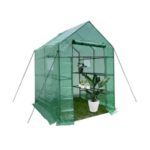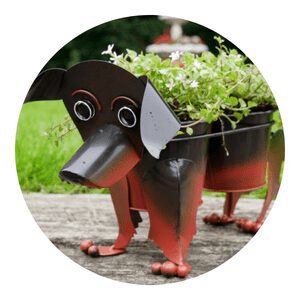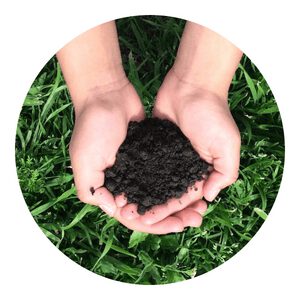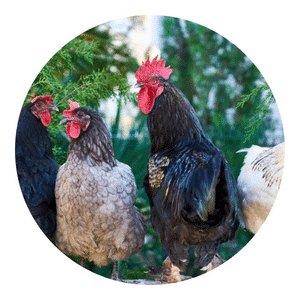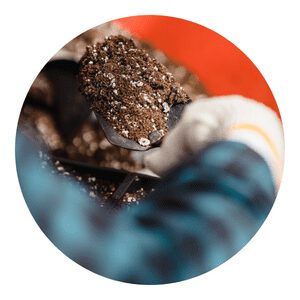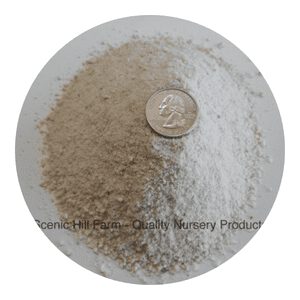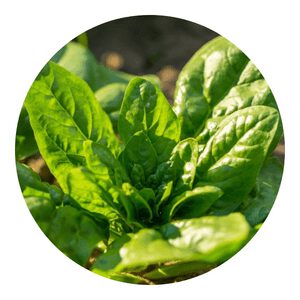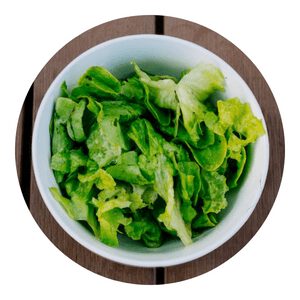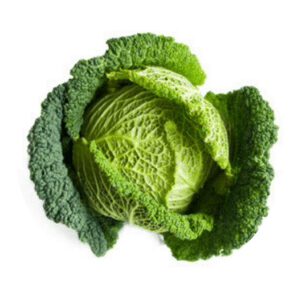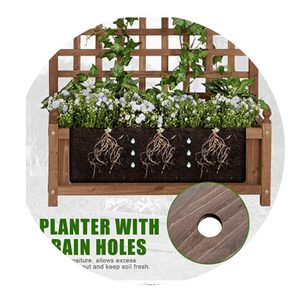How to grow organic Kale
Chappy the gardener, a well-known blogger and gardening enthusiast, has released a new guide on how to grow organic kale.
The guide provides detailed instructions on how to plant, care for, and harvest kale, as well as tips on how to make the most of your crop.
Whether you’re a beginner gardener or an experienced green thumb, this guide is a valuable resource for anyone looking to add kale to their garden.
Kale Menu
Organic kale is a superfood that is packed with nutrients. It is also relatively easy to grow, and can be done so in a small space.
Here are some tips on how to grow organic kale:
Find the Right Spot
Organic kale is a nutrient-rich, leafy green vegetable that is part of the cabbage family.
Kale can be grown in most climates and is relatively easy to care for, making it a great choice for beginner gardeners. When choosing a spot to grow your organic kale, there are a few things to keep in mind.
First, kale prefers full sun but will also do well in partial shade. If you live in an area with hot summers, choose a spot that gets some afternoon shade to prevent the leaves from wilting.
Second, organic kale needs well-drained soil. Be sure to amend your soil with compost or other organic matter before planting to help improve drainage.
Finally, consider the space you have available. Kale can get quite large, so make sure you have enough room in your garden or container for it to spread out.
Prepare the Soil
Organic kale is a superfood that is packed with nutrients. It is a great source of vitamins A, C, and K, as well as calcium and iron. Kale is also low in calories and fat, and high in fiber.
To grow organic kale, start by preparing the soil. Kale prefers a well-drained, fertile soil with a pH between 6.0 and 7.0.
Amend the soil with compost or manure to improve drainage and add nutrients. loosen the top 6-8 inches of soil with a shovel or tiller before planting.
Plant kale seeds ½ inch deep in rows 18-24 inches apart. Water the seeds thoroughly after planting.
Once the plants emerge, thin them to 12-18 inches apart. Keep the soil moist throughout the growing season by watering deeply once or twice a week.
Plant the Seeds or Seedlings
Organic kale is a nutrient-rich, leafy green that can be grown throughout the year in most climates.
Kale is relatively easy to grow, and can be started from seed or transplanted as seedlings.
If you are starting from seed, sow the seeds indoors 4-6 weeks before the last frost date in your area. Use peat pots or seed trays filled with a sterile potting mix, and press the seeds into the soil.
Keep the soil moist but not wet, and provide plenty of indirect light. The seeds should germinate within 7-10 days. Once they have sprouted, thin the seedlings so that only the strongest one remains in each pot.
Transplanting kale seedlings is best done when they are 4-6 weeks old and have developed several true leaves.
Water Regularly
To grow organic kale, you need to water it regularly. Kale prefers soil that is moist but not soggy. Water your kale plants about 1-2 times per week, depending on the weather conditions.
Be sure to check the soil before watering to see if it needs moisture.
Kale grows best in full sun but can tolerate partial shade. If you live in an area with hot summers, provide some afternoon shade for your kale plants.
Plant kale in early spring or late summer/early fall for the best results.
Organic fertilize as Needed
To grow organic kale, start with seeds or transplants.
Plant the seeds or transplants in rich, well-drained soil that has been amended with organic compost.
Water the plants regularly, and fertilize them as needed with an organic fertilizer. Harvest the kale when the leaves are dark green and tender.
With just a little effort, you can enjoy fresh organic kale all season long!
Kale does best in loose, well-drained soil. Fertilize kale regularly with compost or manure.
Harvest and Enjoy!
What is the best way to grow kale?
There are a few things to keep in mind when growing organic kale.
First, it prefers cool weather and does not do well in the heat. It also needs full sun or partial shade.
Kale will need regular watering, but be careful not to overwater as this can cause the leaves to turn yellow.
To grow kale, start by planting the seeds indoors about 6-8 weeks before the last frost date. Sow the seeds thinly in rows about 1/2 inch deep.
Once they have germinated, thin the seedlings so that they are about 6 inches apart.
If you want to grow kale that's big and strong, Here's what you need to do, according to Chappy the Gardner: First, find some organic kale seeds. Then, in early spring, start them indoors in pots. Once they've sprouted, transplant them outside. Give them plenty of space to grow, and water them well. Fertilize with compost, and soon you'll see Leaves that are green and nutritious - perfect for eating!
Chappy The Gardener
how to grow kale hydroponically
Hydroponic kale is easy to grow indoors with little space requirements. You will need a container, water, nutrient solution, and grow lights.
Start by filling your container with water and adding the nutrient solution.
Suspend your grow lights above the water so they are about 6 inches from the surface of the water.
Plant your kale seeds in small pots or net pots and place them in the container. The roots of the plants will hang down into the water and receive nutrients from the solution.
How long does kale take to grow hydroponically?
Kale grows best in cool weather and takes about 45 days to mature. When growing kale hydroponically, the plants will need 18-24 hours of light per day.
They will also need to be fed nutrients every other day. To harvest, cut the leaves from the stem when they are six to eight inches long.
how to grow kale indoors
If you love kale but don’t have the space for an outdoor garden, you’re in luck. Kale is one of the easiest vegetables to grow indoors.
All you need is a sunny spot and some basic supplies.
Here’s what you’ll need to get started:
-Seeds or seedlings
-Potting soil
-A pot or container
-Water
To start, fill your pot with potting soil and add water until the soil is moist. Then, plant your seeds or seedlings about 2 inches apart. If you’re using seeds, make sure to keep the soil moist until they sprout.
Once your plants are established, water them whenever the top inch of soil feels dry. Kale thrives in bright light, so place your pot near a sunny window.
In just a few weeks, you’ll have fresh kale to enjoy!
Does kale grow well in pots?
Kale is a superfood that is packed with nutrients, and it grows well in pots. You can grow organic kale in your own home with just a few simple supplies.
To get started, you will need a pot that is at least 12 inches wide and 12 inches deep. Fill the pot with a good quality potting mix that has been enriched with compost.
Water the mix well and then plant your kale seeds. Cover the pot with a clear plastic lid or bag to create a mini greenhouse effect and place it in a sunny spot.
Water your kale seedlings regularly, and thin them out once they have grown to be about 4 inches tall. When the weather starts to warm up, you can remove the cover from your pot so that the plants can harden off.
Keep an eye on the soil moisture levels and water when needed.
What month do you plant kale?
Kale is a powerhouse vegetable that is packed with nutrients and antioxidants. It is a great addition to any diet, and can be planted in most regions of the United States.
The best time to plant kale is in the early spring, around March or April. Kale likes cooler weather, so planting it in the early spring will give it a chance to grow before the hot summer months arrive.
If you live in an area with a shorter growing season, you can also plant kale in late summer for a fall crop. Just be sure to give your kale plants enough water, as they will need about 1-2 inches per week.
How long does it take to grow a kale?
Kale is a relatively easy vegetable to grow. It can be grown in most climates and does not require much space.
Kale will germinate within 10 days and can be harvested within 2-3 months.
Is kale difficult to grow?
Kale can be grown in the spring, summer, or fall. It is a cool weather crop that prefers full sun but can also tolerate partial shade.
Kale is a hardy plant that is not difficult to grow. The key to success is to start with healthy plants, provide them with plenty of water and fertilizer, and protect them from pests and diseases.
With a little care, you can enjoy fresh kale all season long!
Does kale regrow after cutting?
Kale is a relatively easy vegetable to grow. It can be grown in most climates and does not require much care.
Once kale is established, it will continue to produce leaves throughout the growing season.
Kale can be harvested by cutting the leaves off at the stem. The plant will regrow new leaves within a few days.
The Best Organic Fertilizers for Your Kale Plants
Kale is a nutrient-rich, leafy green vegetable that grows well in most climates. When growing kale organically, it’s important to use the best organic fertilizers to ensure healthy plants.
There are many organic fertilizers on the market, but some are better than others for kale plants.
One of the best organic fertilizers for kale is compost.
Compost provides essential nutrients that kale plants need to grow and thrive. It also helps improve drainage and aeration in the soil, which is important for root health.
Another great organic fertilizer for kale is fish emulsion.
Fish emulsion is high in nitrogen, which is an essential nutrient for leafy green vegetables like kale. It also contains other essential nutrients like phosphorus and potassium. Fish emulsion can be applied directly to the soil or mixed with water and used as a foliar spray.
Compost fertilizer
Organic kale is a great way to get your daily dose of greens, but it can be tricky to grow. One way to ensure a bountiful harvest is to use compost fertilizer.
Here’s how to do it:
1. Start with a high-quality compost. It should be dark in color and have a crumbly texture. Avoid any that smells sour or ammonia-like, as this indicates it’s not fully broken down and could harm your plants.
2. Apply the compost around the base of the kale plants, being careful not to disturb their roots.
3. Water the plants well after applying the compost, using enough water to moisten the soil to a depth of 6 inches or more.
4. Repeat this process every few weeks throughout the growing season. Your kale will thank you for it!
Horse manure
Horse manure is an excellent fertilizer for kale and other greens. It is high in nitrogen and other nutrients that plants need to thrive.
To use horse manure as a fertilizer, simply spread it around the base of your kale plants. Be sure to wear gloves when handling manure, as it can be quite dirty. Apply the manure once every few weeks, or as needed based on the growth of your plants.
Horse manure is a great way to naturally fertilize your kale and other greens. It is safe for both people and animals, and will provide your plants with the nutrients they need to grow strong and healthy.
Donkey manure
Organic kale is a nutritious and delicious leafy green that is easy to grow in your home garden.
One of the best ways to fertilize kale is with donkey manure.
Donkey manure is high in nitrogen, phosphorus, and potassium, which are essential nutrients for healthy plant growth.
Here are some tips for using donkey manure fertilizer for your kale:
1. Collect fresh donkey manure from a farm or stable. If you can’t find fresh manure, you can also use aged manure that has been composted for at least six months.
2. Spread the donkey manure around the base of your kale plants. Be sure to wear gloves and a mask when handling the manure, as it can be quite smelly!
3. Water the plants thoroughly after applying the fertilizer.
4. Repeat this process once every two weeks during the growing season.
Fish manure
When it comes to kale, using fish manure fertilizer is one of the best ways to ensure a bumper crop. This type of fertilizer is high in nitrogen and other essential nutrients, making it ideal for leafy greens like kale.
Here’s how to use fish manure fertilizer for kale:
1. Begin by mixing the fish manure with water in a ratio of 1:10.
2. Apply the mixture to your kale plants, being careful not to get any on the leaves.
3. Water the plants as usual after applying the fertilizer.
Fish manure fertilizer is an excellent way to give your kale a boost, resulting in bigger, healthier plants. Plus, it’s an organic option that is safe for both you and the environment.
Cow manure
If you’re looking for an organic way to fertilize your kale, look no further than your local cow pasture. Cow manure is an excellent source of nutrients for kale, and it’s easy to use.
Here’s how to do it:
1. Collect the manure. The best time to do this is in the spring, when the cows are grazing on fresh grass. Manure that’s been sitting around for a while won’t be as effective.
2. Spread the manure on your kale patch, using about 1/2 pound per 10 square feet. Be sure to wear gloves and a mask to avoid breathing in any dust.
3. Water the manure in well so that it doesn’t burn the roots of the plants.
4. You’ll see results within a few weeks – your kale will be greener and healthier than ever!
Rabbit manure
Rabbit manure is an excellent organic fertilizer for kale. It is high in nitrogen and other nutrients that kale needs to grow well.
To use rabbit manure fertilizer, simply spread it around the base of the kale plants. Be sure to wear gloves when handling rabbit manure, as it can be quite smelly!
Chicken manure
Chicken manure is a great fertilizer for kale. It is high in nitrogen and other nutrients that kale needs to grow well.
Here are some tips on how to use chicken manure fertilizer for kale:
1. Apply chicken manure to the soil around your kale plants. You can either dig it into the soil or just spread it on the surface.
2. Water the area well after applying chicken manure, to help it break down and get into the soil.
3. Reapply every 4-6 weeks during the growing season, or as needed based on plant growth.
4. Be careful not to overdo it with chicken manure, as too much nitrogen can actually harm kale plants. Too much nitrogen will cause the plants to produce lots of leaves but not many flowers or fruits.
Goat manure
Goat manure is an excellent fertilizer for kale. It is high in nitrogen and other nutrients that kale needs to grow well. Here are some tips on how to use goat manure fertilizer for kale:
-Apply the manure to the soil around the kale plants, being careful not to get any on the leaves.
-Do this once every two weeks or so during the growing season.
-Stop using goat manure fertilizer about a month before you harvest the kale, so the leaves don’t taste too strong.
Blood meal
Kale is a nutrient-rich leafy green that can be grown year-round in many regions. For best results, amend the soil with blood meal fertilizer before planting.
Blood meal is high in nitrogen and will help give your kale plants a boost of energy to get them started.
To use blood meal as a fertilizer, simply work it into the top layer of soil around your kale plants.
Be careful not to overdo it, though, as too much nitrogen can cause leaf burn.
Once every two weeks should be sufficient. Your kale plants should respond with robust growth and deep green leaves.
Bone meal
Bone meal fertilizer is an excellent source of nutrients for kale. It is high in phosphorus and nitrogen, which are essential for healthy plant growth.
Here are some tips on how to use bone meal fertilizer for kale:
1. Apply bone meal fertilizer to the soil around your kale plants before planting. This will help to ensure that the plants have all the nutrients they need from the start.
2. You can also side dress your kale plants with bone meal fertilizer during the growing season. This means applying it to the soil around the plants, about 6 inches away from the stem. Do this every few weeks for best results.
3. Be sure to water well after applying bone meal fertilizer, as it can be caustic to plant roots if left dry.
Following these tips will help you get the most out of using bone meal fertilizer for kale.
Green manure
Green manure fertilizer is an important part of growing organic kale. It helps to improve the soil quality and provides nutrients for the plants.
Here are some tips on how to use green manure fertilizer for kale:
1. Choose a green manure crop that is appropriate for your climate and soil type. Some good options for kale include Mustard, Buckwheat, and Legumes.
2. Sow the seeds of your chosen green manure crop in early spring, before planting your kale. This will give the crop time to grow and mature before it needs to be turned into the soil.
3. When it comes time to harvest your kale, cut down the green manure crop and turn it into the soil around the kale plants. This will provide essential nutrients for the plants and help improve the quality of the soil.
What can you plant near kale?
Kale does best in full sun but can also tolerate partial shade. When planting, make sure to space kale plants 18-24 inches apart.
You can plant other vegetables near kale, such as cabbage, Brussels sprouts, and collards. These vegetables are all part of the Brassica family and do well when planted together.
You can also plant herbs such as thyme, oregano, and basil near kale.
How often should you water kale?
Kale can be grown indoors or outdoors.
When growing kale indoors, you will need to water it more often than if you were growing it outdoors.
The amount of water that kale needs will depend on the size of the plant, the type of soil, and the climate.
In general, you should water kale about once a week. If the weather is hot and dry, you may need to water it more often.
If the weather is cool and rainy, you may need to water it less often.
To know if your kale needs water, check the soil before watering. The soil should be moist but not soggy. Stick your finger into the soil to check the moisture level.
the health benefits of kale
Kale is a nutrient-dense leafy green vegetable that offers numerous health benefits. One cup of kale provides over 1,000% of the daily recommended value of vitamin K and nearly 200% of the recommended value of vitamin A.
It is also a good source of iron, magnesium, calcium, and vitamins C and B6.
Kale is low in calories and high in fiber, which can help with weight loss and digestion. Additionally, the antioxidants in kale may help to protect against some chronic diseases such as cancer.
Kale Varieties
There are many different types of kale, each with its own unique flavor.
Here are some of the most popular varieties:
Lacinato kale, also known as Dinosaur kale or Tuscan kale, has dark green, deeply lobed leaves and a chewy texture. It’s perfect for sautéing, stir-frying, or using in soups and stews.
Redbor kale has deep purple leaves with a slightly sweet flavor. It’s beautiful as a garnish or in salads, and makes a delicious addition to smoothies.
curly kale is the most common type of kale found in supermarkets. It has ruffled leaves and a slightly bitter taste. Curly kale is great for juicing, as well as adding to soups and salads.
Grow your own food! Avoid toxins and save money.
Organic seeds are something you can trust. They’re non-GMO, high quality, and they’ll help you grow the perfect plants – whether you’re a beginner or a green thumb.
In conclusion, growing organic kale is a rewarding experience that can be enjoyed by anyone with a little bit of time and space.
With just a few simple tips, you can enjoy fresh, healthy kale all season long. So what are you waiting for?
Get out there and start growing!
Click To Grow
Helps Us Grow – Share If You Like



